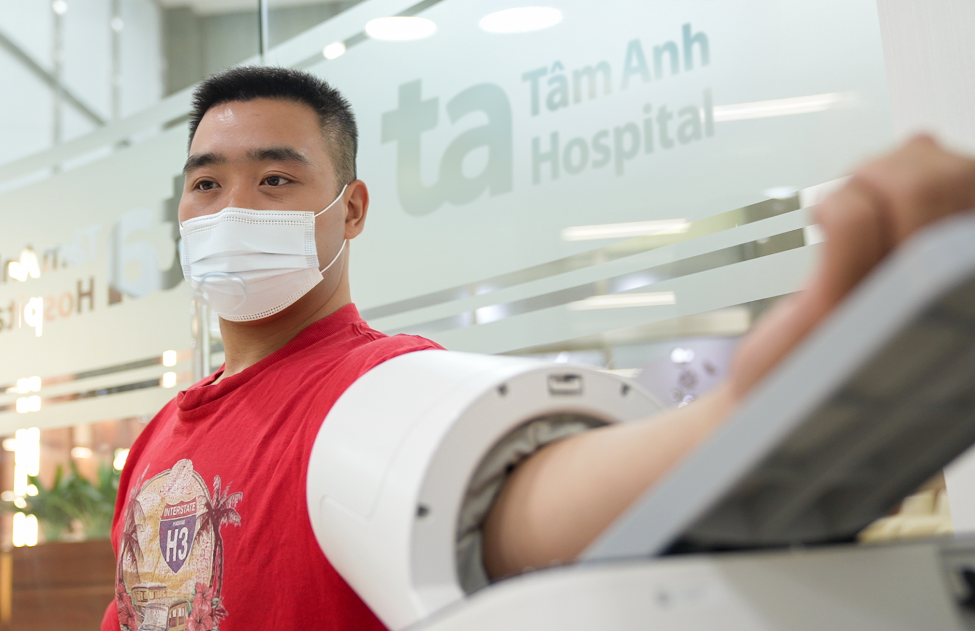Upon examination at Tam Anh General Hospital in Hanoi, Vu had a BMI of 42.1 (weighing 134 kg, height 1.74 m), and a visceral fat area of 270 cm2. Doctor Vu Thuy Thanh of the Weight Control and Obesity Treatment Center diagnosed him with severe obesity with several complications, including elevated liver enzymes, fatty liver with fibrosis, lipid disorders, high blood uric acid, and joint pain.
 |
Vu undergoes a general health check during a follow-up appointment in mid-June. Photo: Tam Anh General Hospital |
Gastric bypass surgery was recommended. However, Vu preferred a non-surgical approach, combining weight-loss medication, hormone therapy, nutrition, and exercise. Doctor Tran Quyen An of the Weight Control and Obesity Treatment Center initially advised changing eating habits and establishing a personalized, scientific nutritional plan. Vu needed to maintain three main meals daily, each with about 250-300 g of green vegetables to increase satiety, improve digestion, and provide essential micronutrients. Moderate starch intake was recommended, along with about 150 g of protein from healthy sources like lean meat, fish, eggs, or tofu to maintain muscle mass and boost metabolism.
A specialist guided Vu through exercises with gradually increasing intensity, adapting to his body's response and maintaining a regular routine to support energy expenditure and keep his body flexible. After over 4 months of treatment, he lost 20 kg, reduced his visceral fat area by 96 cm2, and his BMI dropped from 42.1 to 34.9. Other health indicators also improved, such as liver enzymes, lipid disorders, and blood uric acid levels.
According to Doctor Thanh, the goal of obesity treatment is not necessarily to achieve an ideal weight immediately. Even a 5-10% reduction in body weight can improve the risks of cardiovascular, endocrine, and musculoskeletal diseases. The medical team continues to aim for a BMI below 30 for Vu.
Minh Duc
| Readers can submit questions about endocrine diseases here for doctors to answer |












